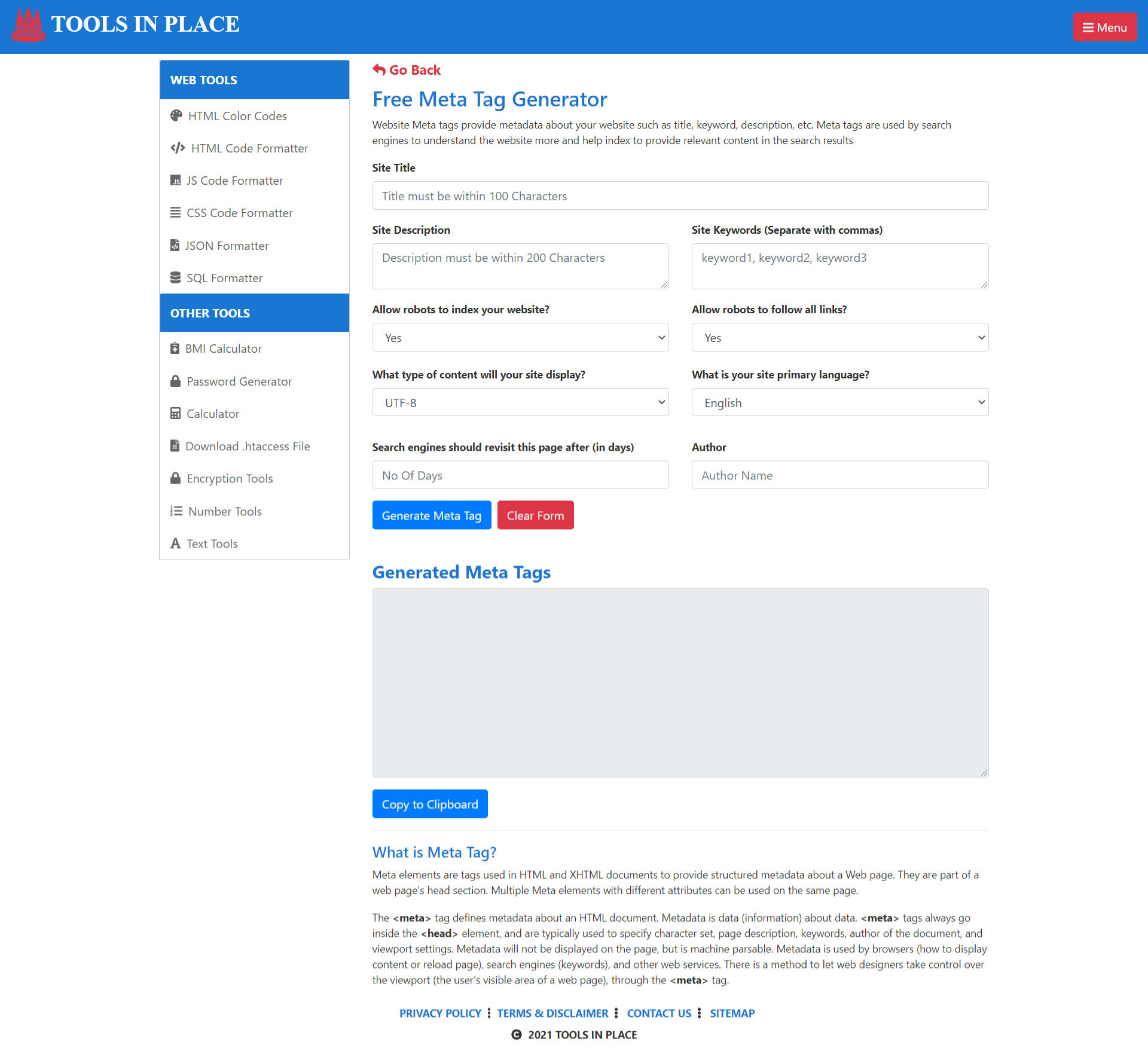Meta Tag Generator Tool
Although meta tags are important for any website, it can be difficult to know what metadata goes where and how you should optimize your meta tags for SEO. Meta tags are essentially little content descriptors that help tell search engines what a web page is about.
That’s why this free meta tag generator tool to make optimizing your meta tags easier for you. Areas we cover within our free metadata generator tool include:
- Meta Title – Enter your webpage’s meta title, which should include your main keywords. It should be no longer than approximately 70 characters.
- Meta Description – This is a short description of your webpage and should be up to approximately 320 characters. Although Google will not consider the information within this field toward your rankings, it’s important to optimize this section for users to increase your click-through-rate, which is a ranking factor.
- Meta Keywords- We have excluded meta keywords as it is an SEO best practice to leave this blank. Not only does Google ignore meta keywords information, but it leaves your website vulnerable to competitors who can more easily identify the keywords that you are trying to rank for. It’s been a number of years since meta keywords were considered by search engines when ranking your website and most SEOs exclude these.
- Allow robots to index your website?
- Allow robots to follow all links?
- Type of content your website displays
- Site Primary Language
- Search engines should revisit this page after
What are Meta Tags?
Meta elements are tags used in HTML and XHTML documents to provide structured metadata about a Web page. They are part of a web page’s head section. Multiple Meta elements with different attributes can be used on the same page.
The <meta> tag defines metadata about an HTML document. Metadata is data (information) about data. <meta> tags always go inside the <head> element, and are typically used to specify character set, page description, keywords, author of the document, and viewport settings. Metadata will not be displayed on the page, but is machine parsable. Metadata is used by browsers (how to display content or reload page), search engines (keywords), and other web services. There is a method to let web designers take control over the viewport (the user’s visible area of a web page), through the <meta> tag.
- Meta tags are the first impression potential visitors receive of your website through organic listings.
- Search engines such as Google use metadata from meta tags to understand additional information about the webpage. They can use this information for ranking purposes, to display snippets in search results, and sometimes they can ignore meta tags.
- Your meta title and meta description are the two tags that represent your website within Google’s search engine results pages (SERPs) for SEO. However, before we go any deeper into your visible tags, let’s take a look at the tags users don’t see— the ones search engines use to identify you.
- These search engine tags deliver a strict set of instructions to the search engine bots on how to behave on specific web pages.
- One such tag is the meta robots tag. This tag allows you to either block or allow crawling of a page by robots. If the tag says ‘no index’, it will instruct robots not to add the page to search results. A ‘no index’ setting should only be used on pages that aren’t useful to users, like login or admin pages. A Meta Robots tag with ‘index’, on the other hand, will allow robots to include the page in their search results.
- Another instruction meta robots tags can have is ‘follow’ or ‘no follow’. Unless circumstances suggest otherwise, you should always set your page links to the ‘follow’ setting.
Meta Description Optimization Tips
- While your website’s meta description tags don’t provide any value to your website’s rankings, they can be optimized towards improving CTR from the SERPs. A couple ways you can do this are:
- Include target keywords.
- This is more common sense than anything, and if you add the exact phrase a user is likely to search for, it will appear bolded in your listing to these users.
- Add symbols.
- Similar to your title tags, including symbols and numbers within your Meta Description tags will help make your listing stand out from the crowd and attract those sought-after clicks.
